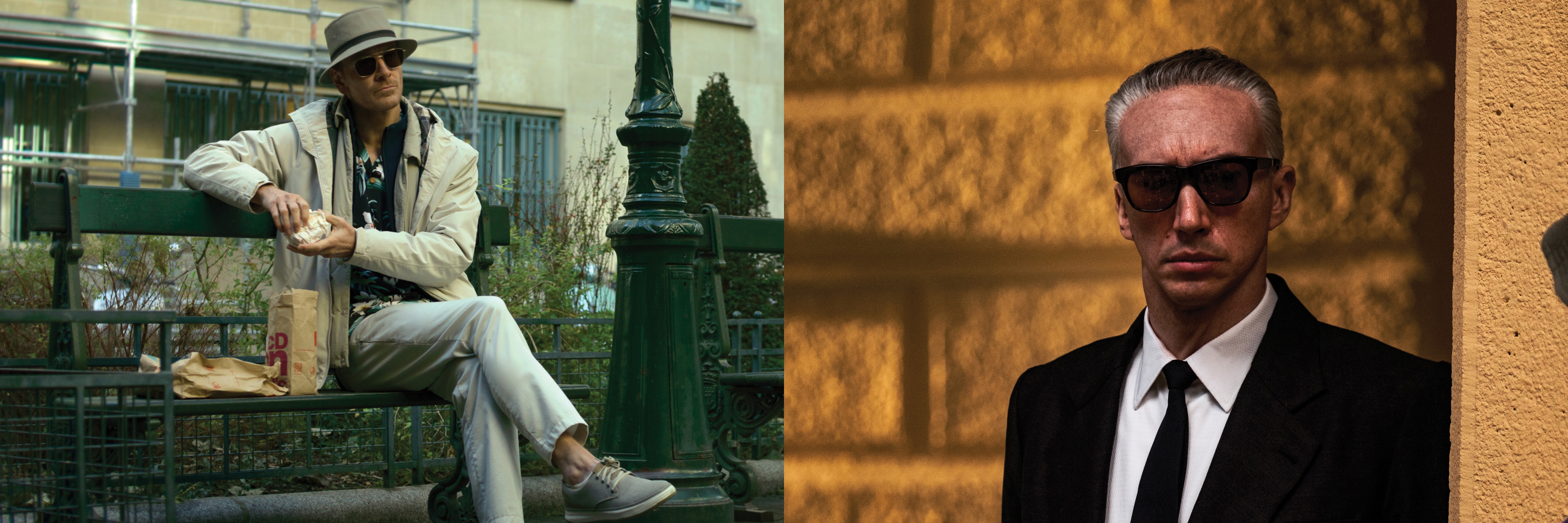
The Professionals: The Killer and Ferrari
Erik Messerschmidt, ASC shoots two stories about men whose business and private lives spin out of control.
A pair of films shot by Erik Messerschmidt, ASC premiered at the Venice International Film Festival last August, and both were collaborations with leading directors: David Fincher’s The Killer and Michael Mann’s Ferrari. Messerschmidt recently spoke with AC from Spain about his work on each production.
The Killer | A Devil of a Job
Fincher and Messerschmidt didn’t discuss the look of The Killer as much as its tempo and structure.
Adapted from a graphic-novel series, the film follows a methodical, nameless assassin (played by Michael Fassbender) whose life spirals out of control after a job goes horribly wrong in Paris. He tries to restore a sense of order by punishing those responsible.
Messerschmidt won an Academy Award for Fincher’s Mank (AC Feb. ’21), and his collaborations with the director span the Netflix series Mindhunter and the feature Gone Girl — with Messerschmidt serving as gaffer for Jeff Cronenweth, ASC (AC Nov. ’14) on the latter.
“David is fastidious,” he says. “He is very prepared, but very collaborative and considerate of what it is everyone’s bringing to the project. He shares his goals for the film with you, and he shares the techniques that he wants to use in a really elegant way. So, you begin to understand quite quickly what he’s looking to achieve on a given shot, a given scene or even on a given film.
“On this film, David was particularly interested in exploring The Killer’s state of mind through the camera’s perspective,” recalls Messerschmidt. “The Killer in his natural state is very much in control of his environment — nothing surprises him, and we wanted the audience to immediately connect to his confidence.”
“When The Killer was in control, we wanted the frame to be in absolute lockstep with Michael’s performance, so the audience would feel completely connected to him, viewing him through a window as if the camera is part of his state of mind.”
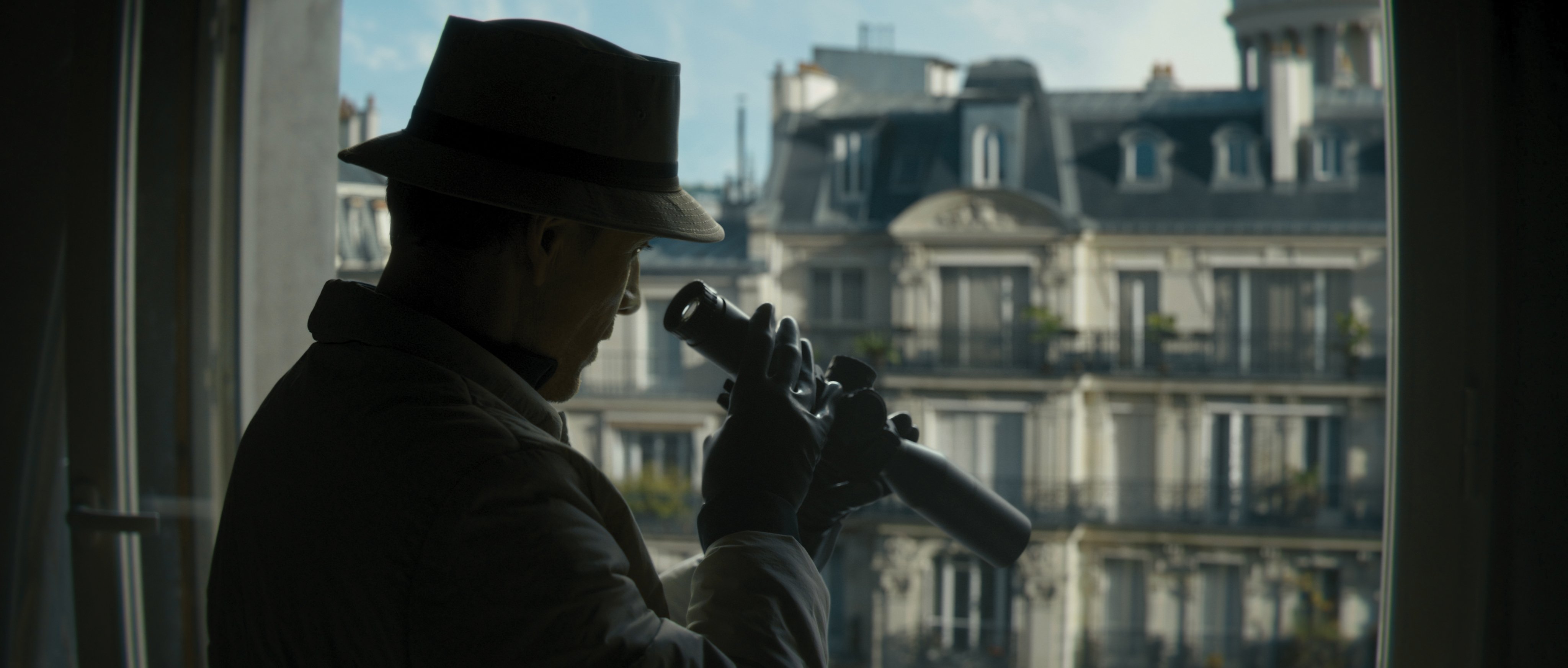
He notes that, in general, “when the camera follows an actor, it is almost always just behind or just ahead of the action — never in absolute sync with the actor’s physical performance. This gives the camera an inherently subjective point of view; in the audience’s subconscious, it becomes a ‘character’ in the scene. However, when The Killer was in control, we wanted the frame to be in absolute lockstep with Michael’s performance, so the audience would feel completely connected to him, viewing him through a window as if the camera is part of his state of mind. A-camera operator Brian S. Osmond and B-camera operator Mick Froehlich worked with Michael to rehearse every action down to the millimeter, much like rehearsing a ballet.”
For moments when The Killer is out of his comfort zone, the cinematographer adds, “we freed the camera, allowing it to be looser and unconstrained, handheld — antithetical to his preferred mental state.
International Pursuit
The story travels between Paris, the Dominican Republic, New Orleans, Florida and Chicago, and it unfolds in chapters, with title cards naming each location. Says Messerschmidt, “We started in Paris, where we shot all the exteriors, apartment plates and airport scenes. The Dominican Republic scenes were shot in the DR, mainly in and around Santo Domingo; the house seen in that chapter is a real location on the north side of the island. The company then traveled to New Orleans — which also doubled for Florida — where the ‘Brute’ scenes were shot. From New Orleans, we traveled to Chicago to shoot both the Chicago and New York sequences. Ultimately, shooting concluded in Los Angeles, where we shot our LED process work.
The filmmakers strove to differentiate each setting through color and contrast. Messerschmidt explains: “The movie starts out in Paris, which has a creamy grayness to the days and cool shadows that contrast with the sodium-vapor practicals at night. When things fall apart, The Killer goes to Dominican Republic, and life is really a mess for him; that’s where the movie is the most confused, and we’re using the most filtration [that was added in post]. From there, the film sequentially becomes sharper and more focused, paralleling his journey. Chicago is the most crisp, with a deeper depth of field.”
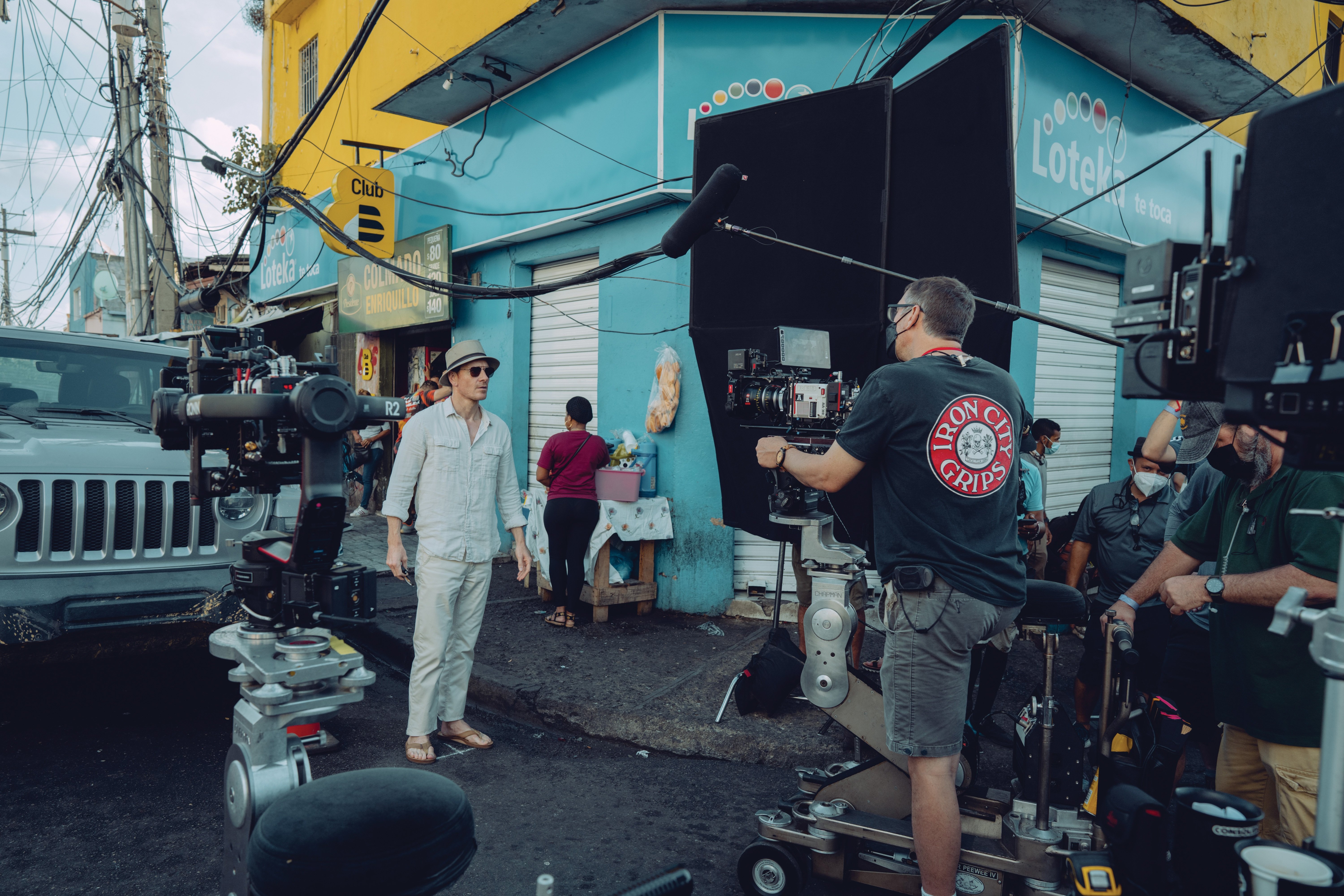
For the scenes set in the Dominican Republic, “David wanted a dirty, humid feeling,” he adds. “I thought it would be interesting if we could get the image to feel almost as if there was condensation inside the lenses, so diffusion felt like the obvious choice. I have a love/hate relationship with diffusion, because I never feel like I can adequately control the effects in changing lighting conditions — especially with soft backlight and veiling flare — so I was apprehensive at first. I found the DaVinci Resolve plug-in ‘Scatter,’ which emulates optical filter effects in the DI suite. I shot some tests and was amazed with the results and how much control I had.”
The Killer’s target in Paris had to have an apartment with large windows, and when a practical location proved difficult to find, the filmmakers took a piecemeal approach. “The apartment across from The Killer’s [stakeout spot] is an amalgamation — a physical facade built in the town square and a CG set extension for the top floor,” says Messerschmidt. “The interior of that apartment was built onstage without any practical glass for the windows. We used a nine-camera setup outside a window in Paris that ultimately served as The Killer’s POVs of the street activity, and as a reference for matte painting and set extension. We captured the entirety of the action in one setup, which meant David and editor Kirk Baxter had numerous choices in the edit — from long-lens POVs to static wide shots, all in matching light. The interior of The Killer’s roost was built onstage in New Orleans and lit with an array of ROE LED video panels, which used the lighting reference images we captured in Paris as a basis for image-based exterior lighting on the set.”
The planning and previs were done “on the back of a napkin with a ballpoint pen,” he adds.
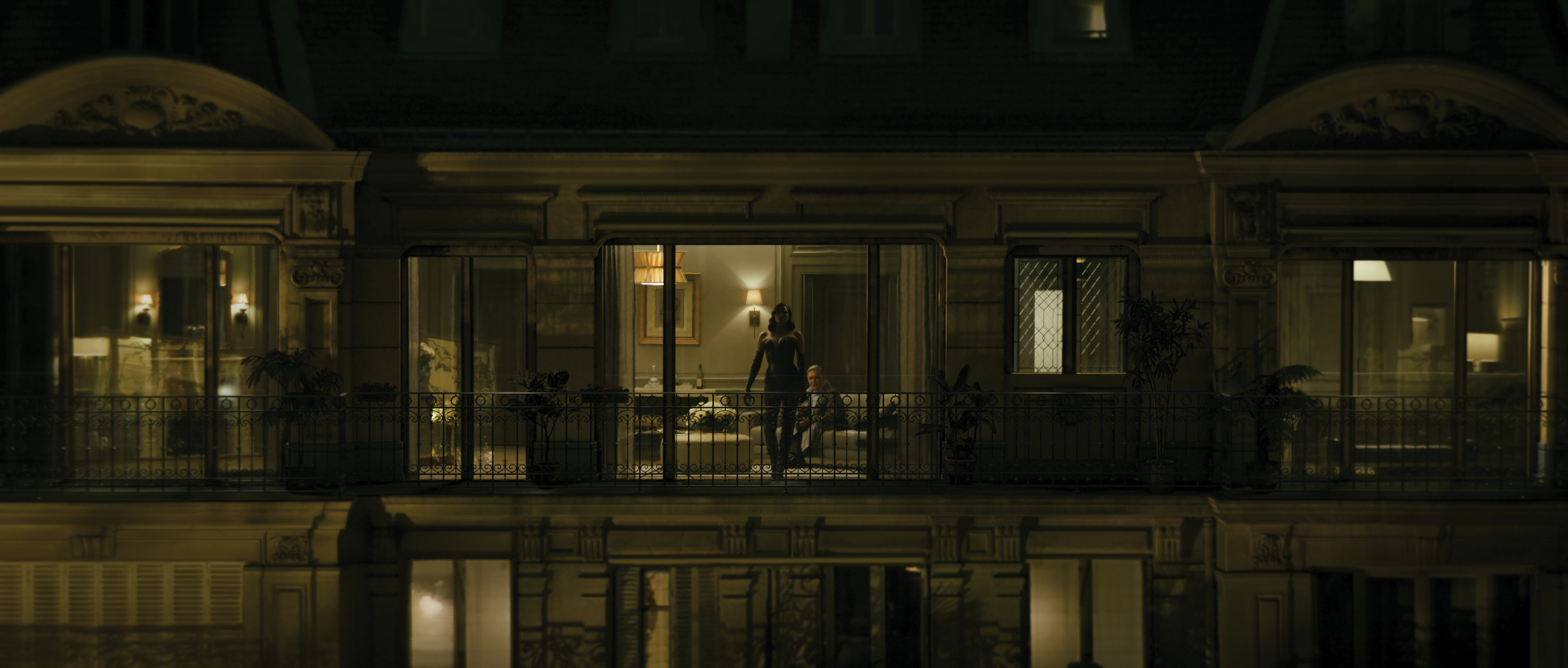
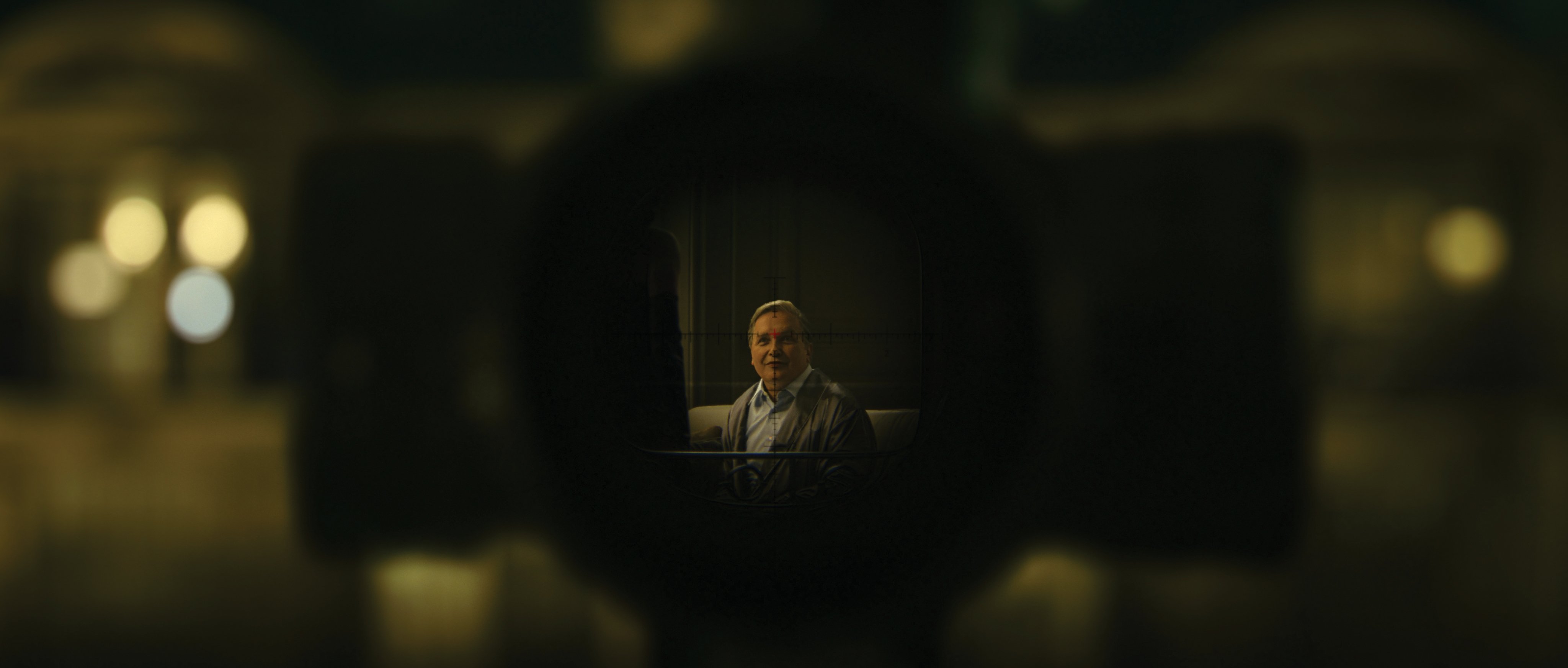
Returning to Red
Fincher has only shot with Red cameras since The Social Network (AC Oct. ’10), and he and Messerschmidt continued that practice on The Killer, teaming a Red V-Raptor ST 8K VV with Leitz Summilux-C primes.
“On this film, I knew we were going to use a lot of mixed color temperatures and be in some situations with very low light levels,” Messerschmidt says. “The Red has extraordinary dynamic range, captures a wide color gamut and has exceptional spectral sensitivity. It’s also quite small, which was helpful since we had numerous situations where we had to mount the camera to motorcycles or cars, or in car interiors, or underneath a seat or in airplanes. I love that camera.”
Of his lens choice, he notes, “I have shot with Summilux-C almost exclusively for the past five or six years. I find myself continually returning to the Super 35 format and Summilux lenses; I find that their simplicity and somewhat predictable nature appeals to the type of work I like to do.”
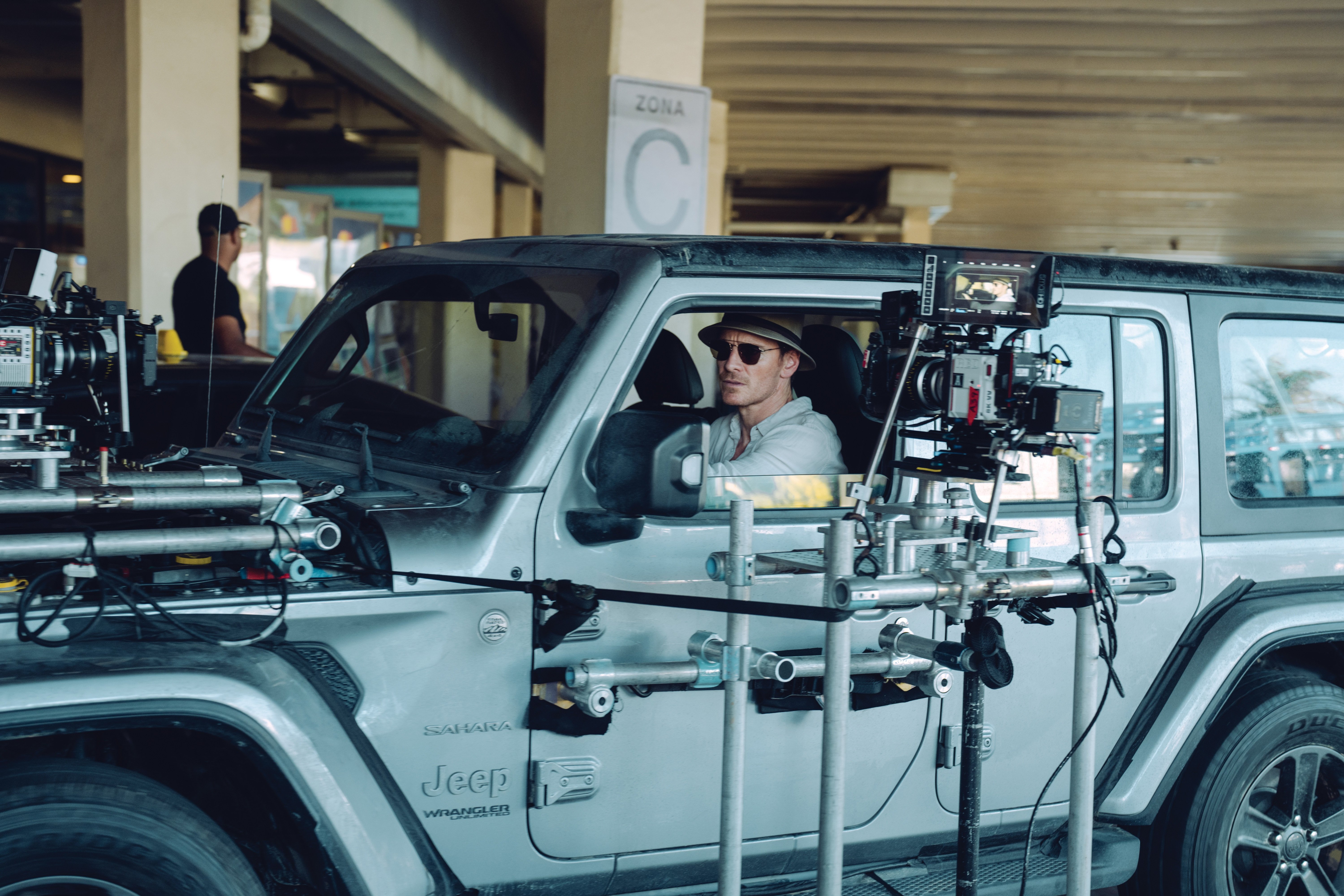
In the final grade, colorist Eric Weidt “applied distortion and our Scatter effects, and the VFX team painted in anamorphic flares as part of our process,” Messerschmidt adds. “We’ve been doing that since Mindhunter. That way, we can tailor flares shot by shot.
“There are many things I like about anamorphic, particularly the way they flare. Unfortunately, I often find they flare when I least want them to, and they’re difficult to control in low-contrast situations. I also find the lack of consistency in resolution and close-focus limitations frustrating, so I prefer to shoot spherical. Given our success with digitally enhanced flares in the past, we thought we could take it a step further. I fully believe that the cinematographer’s job doesn’t end at picture wrap and that the post ‘printing’ process is just as important as principal photography. When I look at the great photographers, their contact sheets are all heavily marked with crop marks and printing test strips — so for me, VFX and post effects are merely an extension of that idea and part of my job.”
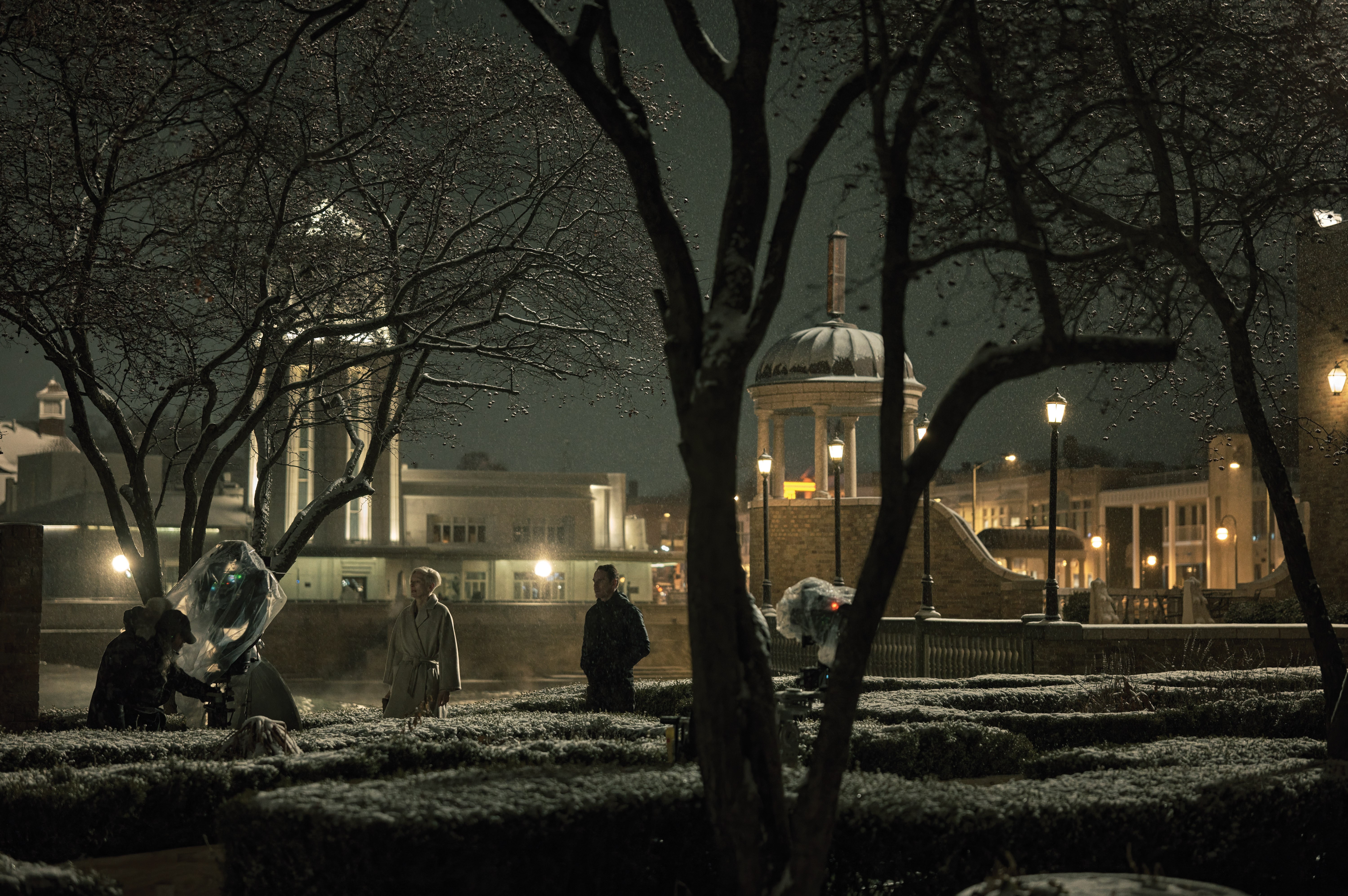
In a similar vein, some shots in The Killer look handheld, but the effect was created in post. “There are sequences where we thought the unstabilized handheld camera would meld well with the state of mind of the character, and so we shot a series of handheld tests. We ultimately elected to shoot the film stable, on a head on the dolly, and then destabilize it to taste digitally. That was a process we had really refined on Mindhunter, and it allowed us to perfectly tune the amount of shake, shot-to-shot, in the assembly stage. It was fascinating to me because in post, we could have a very agitated moment, particularly in the fight sequence, and then over the course of 20 or 30 frames, stabilize it for a moment. It almost gives the sense that we’ve changed the frame rate, but in fact, all we’ve done is stabilize the shot slightly.”
To achieve this, the crew shot most of the film in 6K 17:9 mode on the Red, with a 17-percent center crop. “This leads to a framing reticle of 5,102x2,171, which translates to a frame size slightly larger than the S35 Academy aperture,” Messerschmidt notes. “In situations where we wanted more overscan area for aggressive handheld, we switched the camera to 7K mode for another 15 percent of additional capture raster to work with.”
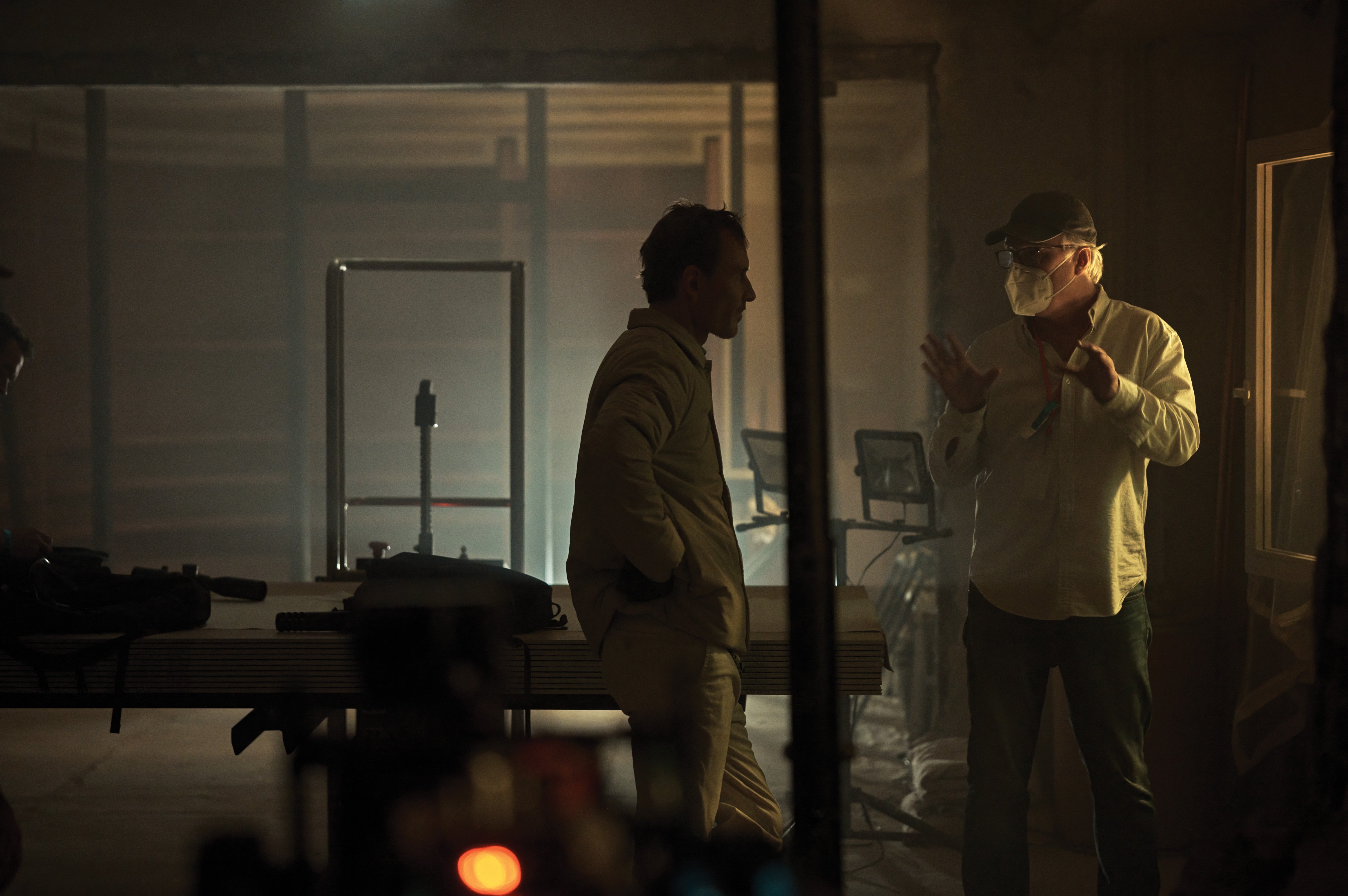
Battling “The Brute”
The Killer’s fight with “The Brute” (Sala Baker), an assassin who has attacked The Killer’s girlfriend, involved extensive stuntvis. The action is set outside and within The Brute’s house, which sits on stilts in a bayou. “We found a location outside New Orleans that everyone liked, and we shot all the exteriors there,” Messerschmidt says. “Because the fight sequence required many setups, we elected to build the interior on stage in New Orleans at Second Line Studios.”
Fincher told stunt coordinator Dave Macomber he wanted the fight “to be exhausting to watch … to go on longer than you would expect,” says Messerschmidt. For the stuntvis, “Dave built the interior of the house out of cardboard boxes onstage, then choreographed and rehearsed the fight sequence with the stunt performers over the course of several months. As part of that process, he shot a camera-directed stuntvis that represented an assembled scene so that we could look at it, make suggestions about adjustments and send it back. That process went on for several weeks.
“There’s a thing we do with fight sequences in cinema where we often deliberately disorient the audience because it makes the scene more interesting or more exciting,” he continues. “We agreed that that was something we didn’t want to do because we wanted the audience to be oriented in the layout of the home. So, we were very dogmatic with the screen direction; we were very particular about what direction the actors were going and made sure they had some geographic reference for which room they were in — where they were going and where they had come from.”
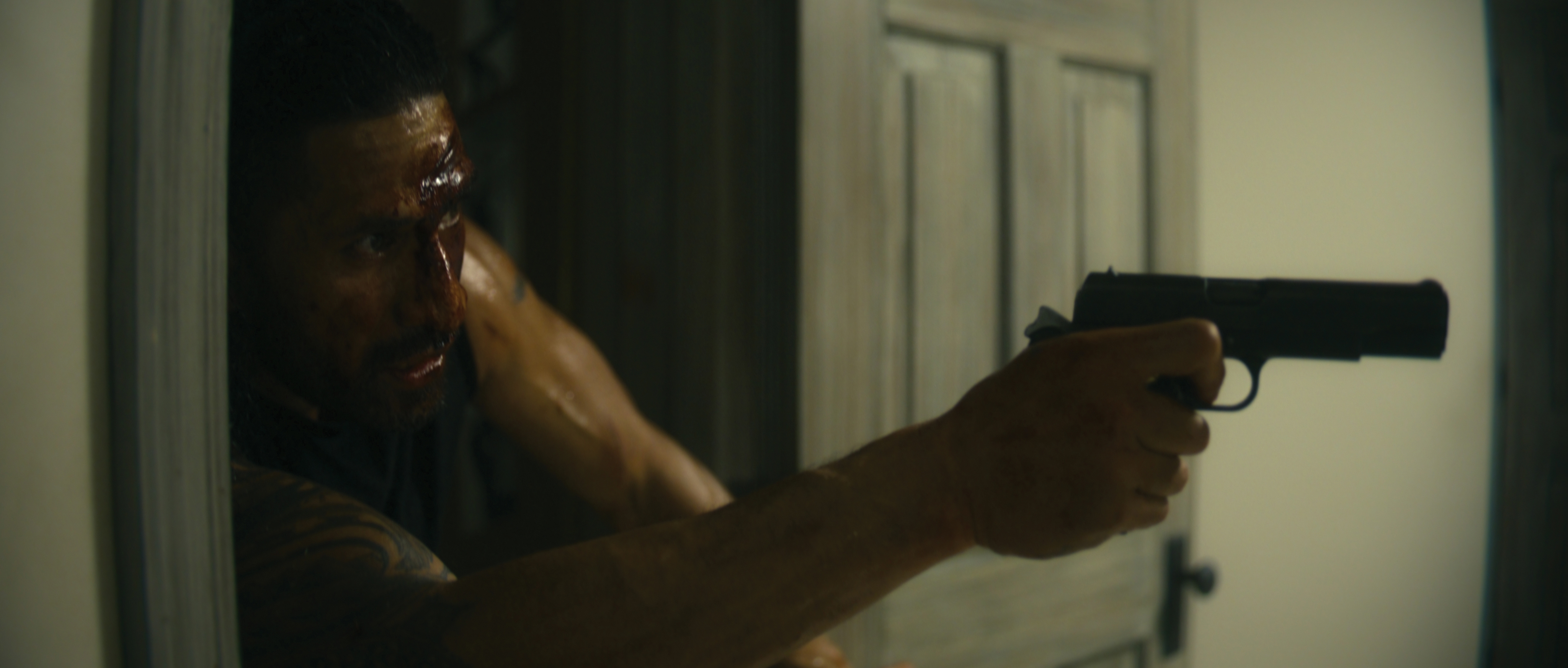
Silhouetted Mayhem
Messerschmidt notes that the exterior of the bayou house called for his “most elaborate lighting setup, but it was relatively small. The art department installed streetlights on the street, and we had a condor with some SkyPanel 360s to light the distant fog. I use a lot of atmosphere, but when we shot that sequence it was very windy, so we were struggling with the consistency of the atmosphere from shot to shot. It was very challenging.”
Though still sharply focused, the fight is sporadically steeped in shadow, with the characters in silhouette. “David thought it would be interesting if we got the sense that both of these characters are trying desperately to stay quiet, as if not to disturb the neighbors — silent and in the dark.”
Driven by Necessity
Asked about his past description of his lighting as “janitorial,” Messerschmidt clarifies, “I would say that my approach to lighting is driven by necessity, not by desire. I don’t walk into a location and think about all the lights I’m going to put in; I walk into a location and usually think about all the things I’m going to get rid of. Often, the result is the need for one or two lights.”
On The Killer, he continues, “The general lighting approach was around color split tone. We were interested in cool shadows and warm highlights, which is certainly not a new idea. I was using quite a bit of cool toplight to add a little color to the shadows and then surrounding the actors with generally warmer incandescent or fluorescent practicals. We did a lot of work with LED tubes and LiteGear LiteMats. In general, it was a minimalist approach.”
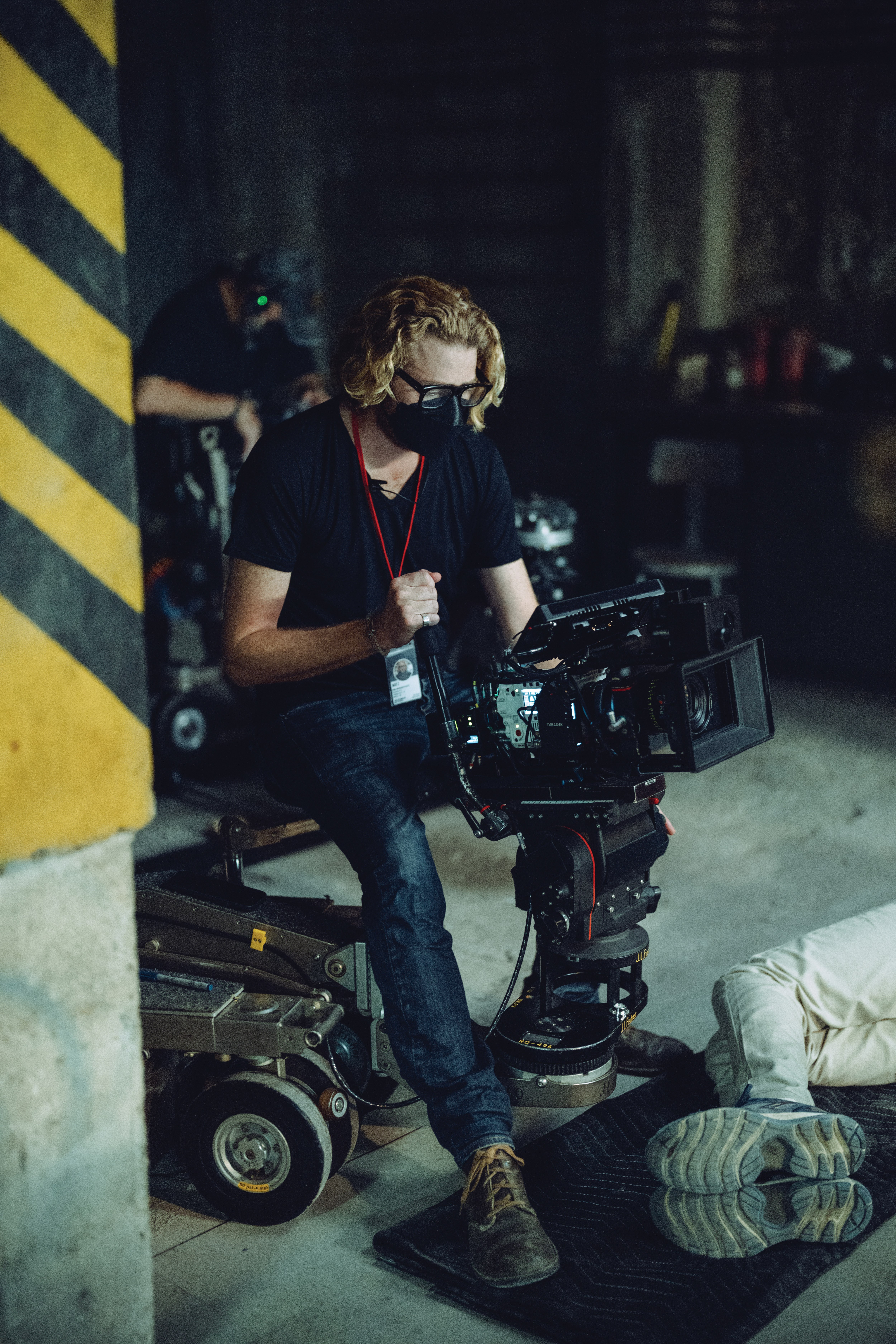
Tech Specs
2.39:1
Camera | Red V-Raptor ST 8K VV
Lenses | Leitz Summilux-C
Ferrari | Man and Machines
Set in 1957, Ferrari covers a pivotal few months in the life of Enzo Ferrari (Adam Driver) when he’s facing bankruptcy and personal crises. While he and his wife, Laura (Penélope Cruz), are struggling to recover from the death of their son, she edges closer to discovering her husband’s secret — his longstanding relationship with a mistress, Lina (Shailene Woodley), with whom he has another son. Meanwhile, to save his business, Ferrari decides to bet everything on the grueling Mille Miglia race, which covers a thousand miles across Italy.
Describing Ferrari as “a family man who had two significant relationships in his life which were in direct conflict, and then a third relationship with machines,” Messerschmidt says the overarching goal was to “give each of those two parts of his life a distinct visual aesthetic. The scenes between people and the racing sequences needed to have two different feels.”
“We wanted the audience to feel like they have to wipe the mud off their goggles, to feel like they smell the gasoline.”
In his discussions with Mann about the film’s look, “the thing that kept coming up was Italian painting, and in particular Renaissance portraiture: Caravaggio, Titian, Tintoretto,” says Messerschmidt. “Most of our early conversations were about light.”
The cinematographer subsequently developed an approach he calls “very natural and simple, but also low key.”
Mann also suggested having a look at his library. “It was a library of immense proportions,” recalls Messerschmidt. “In one section were several aisles of books dedicated to the Ferrari company and Enzo himself, and the history of motor racing. Michael also showed me and [camera operator] Roberto De Angelis quite a few films of what motor racing looked like in that era, particularly the accidents, to get us into that headspace.”
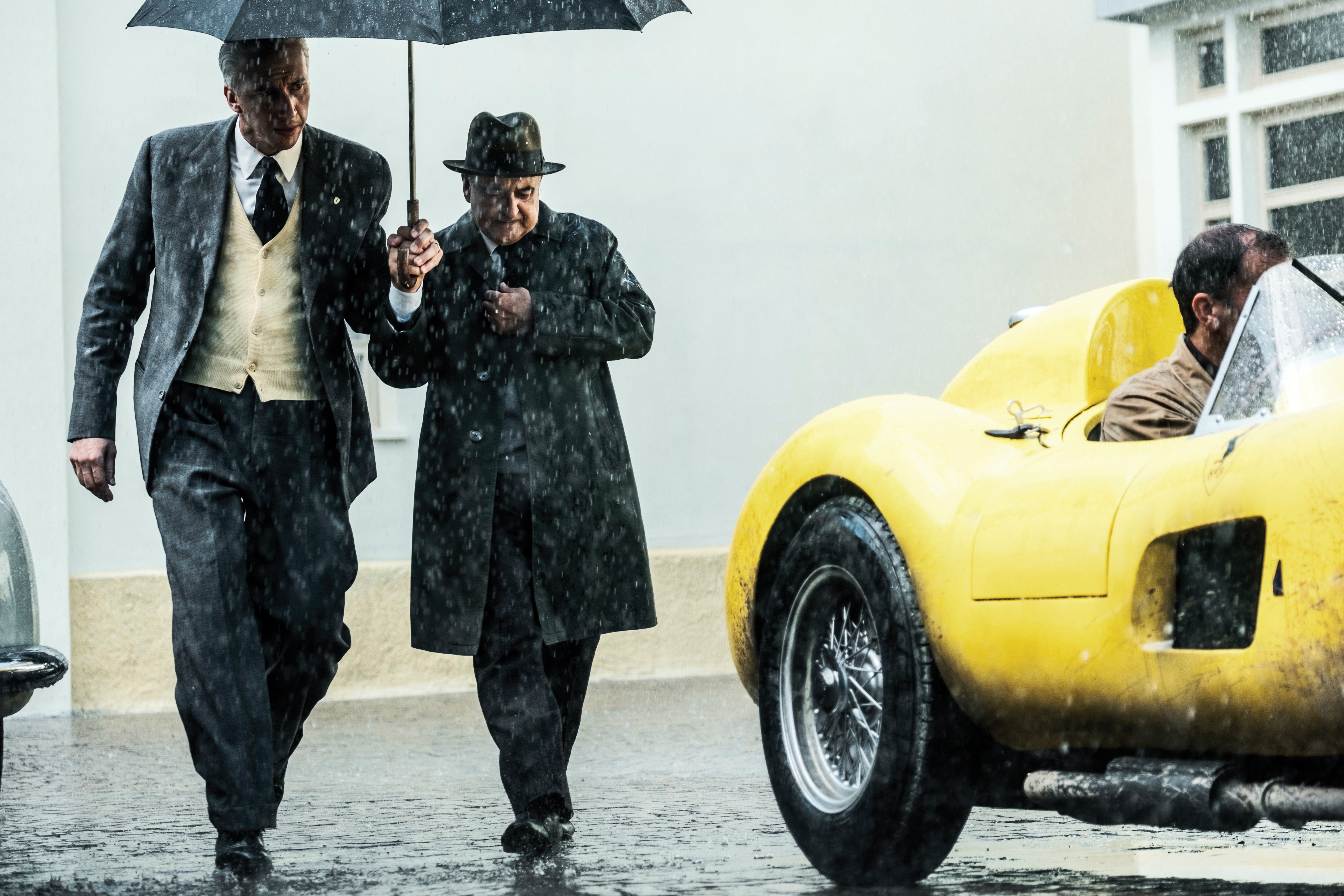
Location Based
Mann insists on shooting on location, and many of the sites used in Ferrari were the real deal. The mausoleum where Enzo and Laura’s son is buried is, in fact, the Ferrari family’s mausoleum. Real locations were also used for the Ferrari home’s exterior and the barbershop Enzo visits every day for a shave.
As for the racing action, “most of it was shot in Emilia-Romagna and Reggio Emilia around Modena,” says Messerschmidt. “The race registration was shot in the correct location in Brescia where the race started. The Futa Pass sequence was shot at the Gran Sasso. We built the French Grand Prix track at a test track outside Turin, and we shot some of that sequence at the Imola Formula 1 track as well.”
In fact, most of Messerschmidt’s prep was devoted to scouting locations and planning pre-lights. “I returned to some locations many times with [production designer] Maria Djurkovic and/or [gaffer] Janosch Voss, and we would discuss different methodologies for how we’d pre-light and what color palettes we would use.”
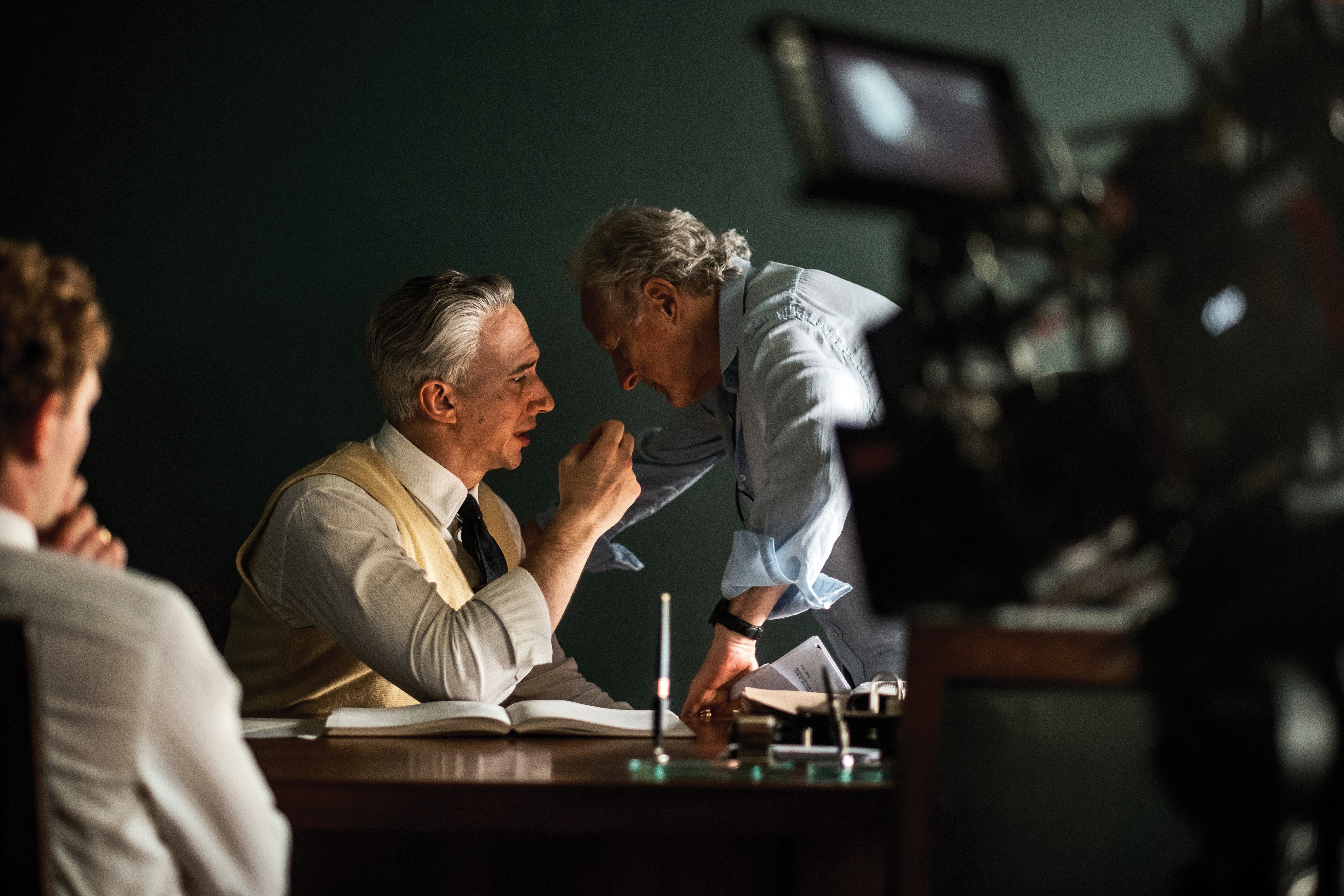
Optical Considerations
Messerschmidt shot most of the drama on the Venice 2, primarily for its dual-ISO capability and array of internal ND filters. “Depending on the lenses we were using for a given shot, I would switch between 8K and 6K modes,” he notes. “For portraiture-style close-ups, we would shoot with primes, and in 8K, with a shallower depth of field. When we switched to zooms and longer lenses, we switched back to 6K.”
The cinematographer’s main lenses were Panavision Panaspeed primes custom-tuned by ASC associate Dan Sasaki, the company’s senior vice president of optical engineering and lens strategy. “I told Dan I wanted a lens that was a little bit softer, with some halation artifacts in the highlights, so the film would have a period feel. He modified the Panaspeeds to create spherical-aberration artifacts to help support that aesthetic.”
Messerschmidt also made extensive use of zoom lenses — many of which were similarly modified, chief among them a Panavision Primo 11:1 and a Fujifilm Fujinon Premier 75-400mm. “I also had a Panavision 12mm H Series, which is a unique, beautiful lens. The H series 12 covers full frame and is very lightweight.”
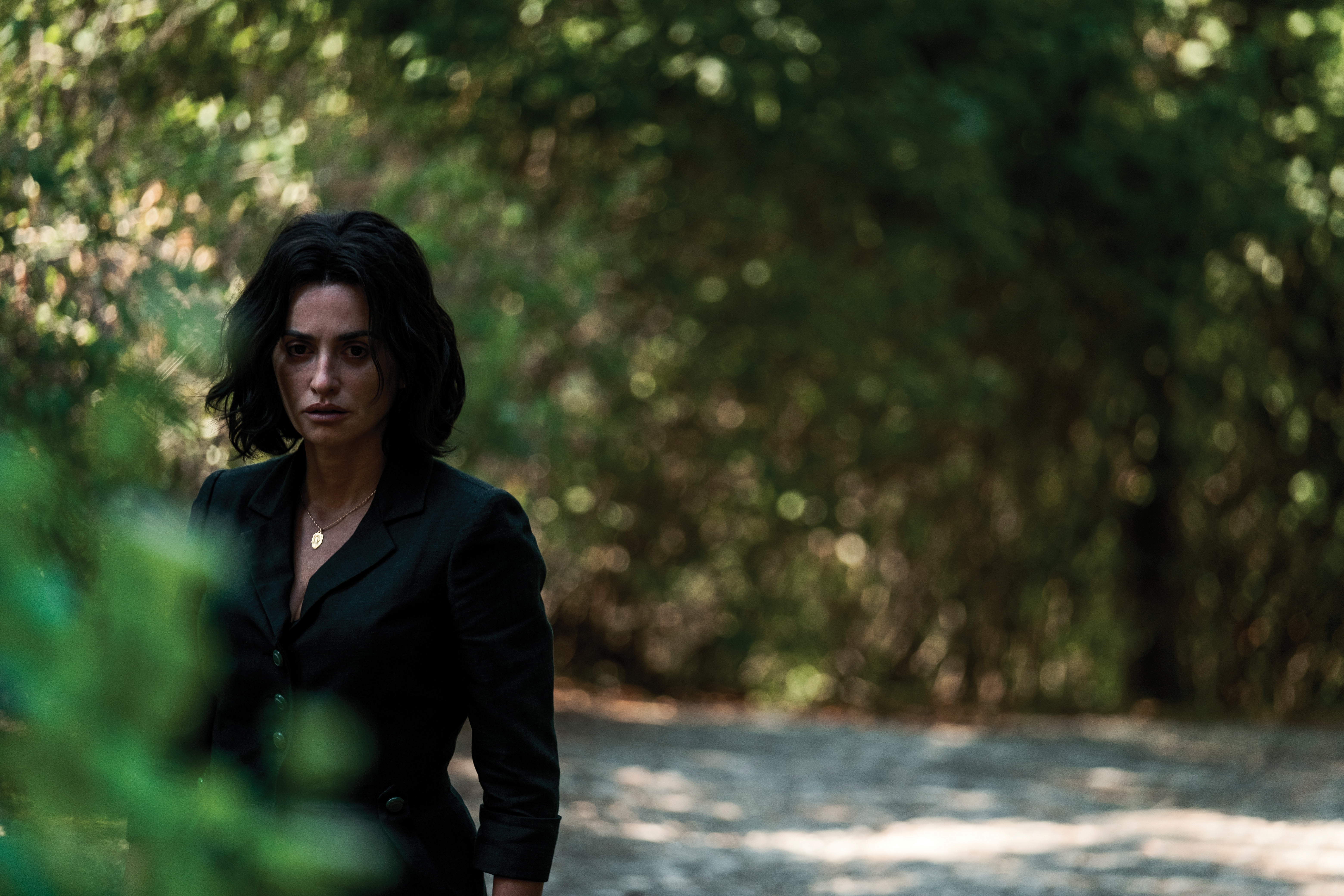
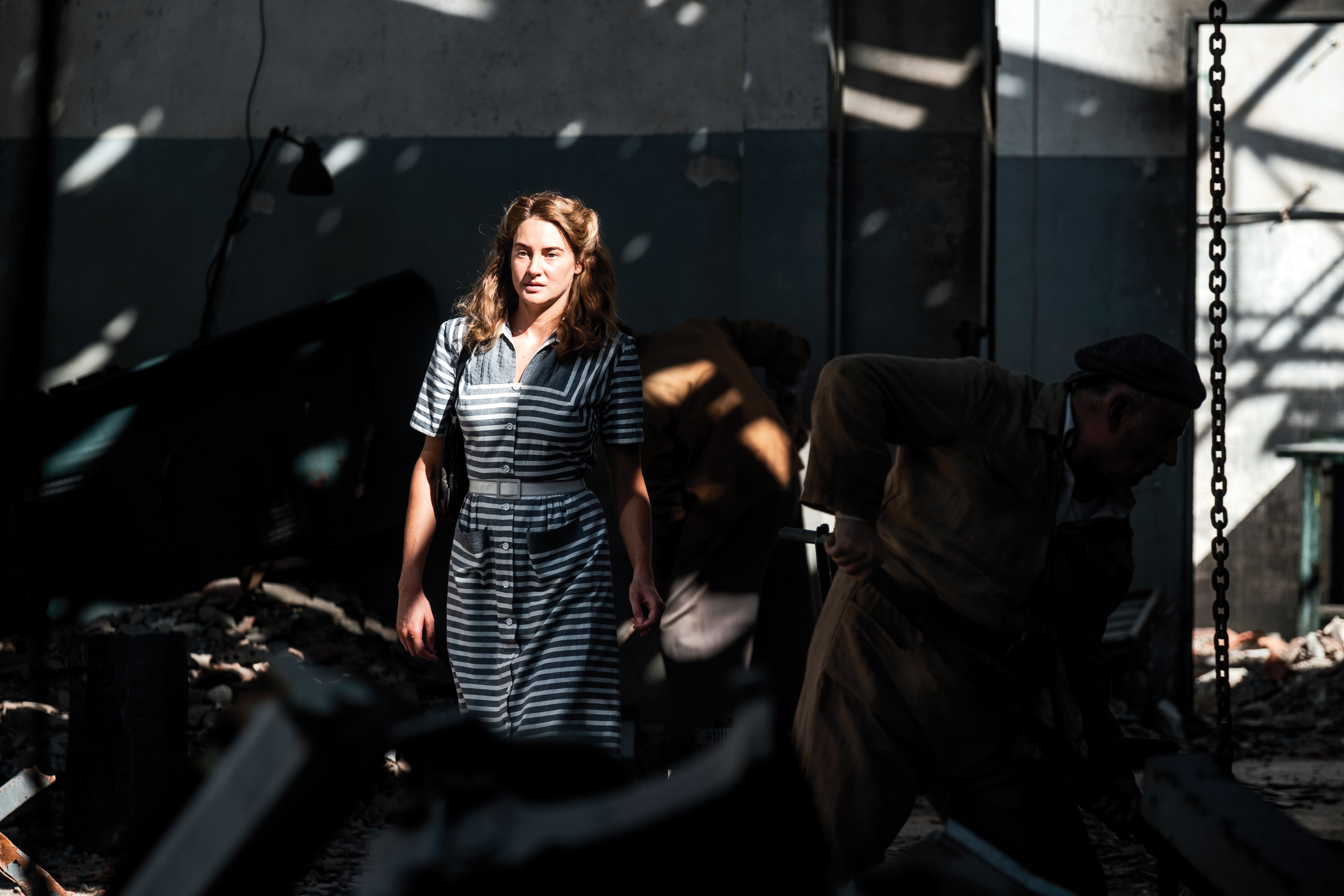
In regard to the production’s use of the Venice 2, the cinematographer adds: “I knew Michael likes to work quickly and that he likes certain tools like the [P+S Technik] Skater Scope, a probe lens that’s a T5.6. So, I knew I needed a camera that was very light-sensitive.
“We put the Skater Scope, paired with various Panaspeeds, on the Steadicam quite a bit, which required the manufacturing of a special plate so that the camera could be balanced on the sled,” he notes. “It was a lot of weight for Roberto to carry, but he was happy to take on the challenge. And it allowed us to get the lens incredibly close to a character’s face while executing a Steadicam shot, which is very unique.
“There are many close-ups and tracking shots where the camera feels abnormally close to the characters,” he adds. “It’s used in dramatic moments.”
Red for Racing
When the film’s action moves to the track, “we wanted the audience to feel like they have to wipe the mud off their goggles, to feel like they smell the gasoline,” Messerschmidt says. “So, the kind of techniques we usually use when shooting cars — close-up, POV, reverse POV, establishing shot — were less interesting to Michael because he felt like they were all slightly observational. A lot of what we were trying to do was bring the frenzied energy of racing.
“In many cases, our technique was quite simple,” he continues. “Roberto did an enormous amount of handheld work on the film, often holding the Venice 2 Rialto in his lap in the car with the actors and precision drivers, as if he was the navigator.”
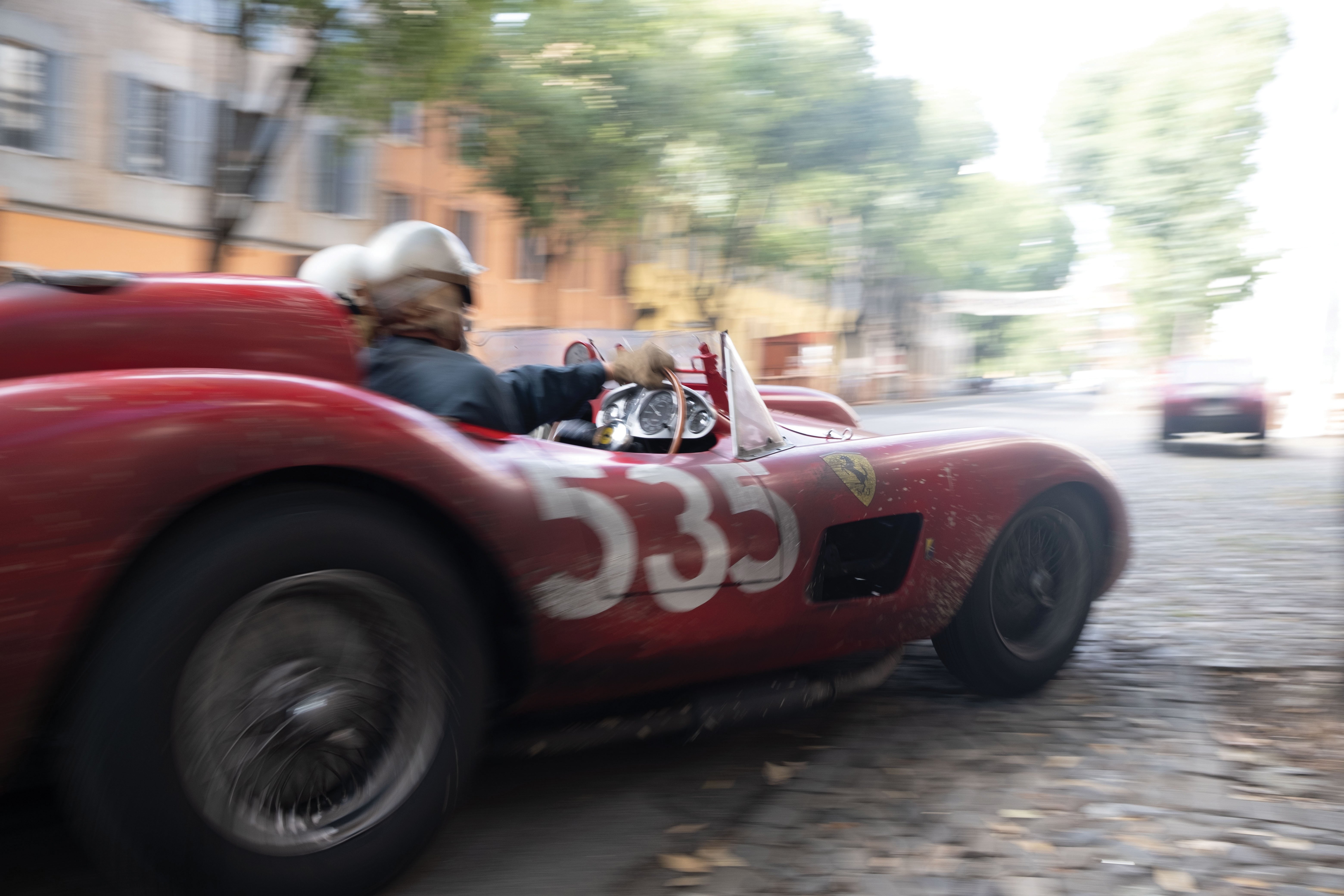
The intensity is underscored by color. “We discussed that we never wanted to see the color red in the film until you see the cars, and that is the only time you see the color red in the film,” says Messerschmidt. “I love that about Michael: He is so detail-oriented and loves those sorts of rules.”
Critical Car Mounts
Mann was determined not to fake velocity: He wanted the picture cars to go at speed.
“We worked with the manufacturers of the replica car bodies we were using to make sure we had fixed mounting positions within the car frames that we could bolt the camera directly to,” Messerschmidt says.
“That meant we were able to quite quickly mount a camera anywhere on the vehicle with very minimal rigging, and the mounting tubes could bolt right into the frame.
“There were little hidden sections of the body panel that we would remove, and there would be threaded holes, which could receive pre-manufactured pipe starters that served as the base for our camera mounts. The car could be driven at the speed that was appropriate, and we didn’t have to worry about the mount suddenly falling off because it had been strapped to the car — it was literally bolted to the frame of the vehicle. That required quite a bit of prep.” The cinematographer adds that he minimized the use of stabilized heads and gimbals, noting, “Michael was very clear that he wasn’t afraid of vibration. He wanted the audience to feel every bump on the road.
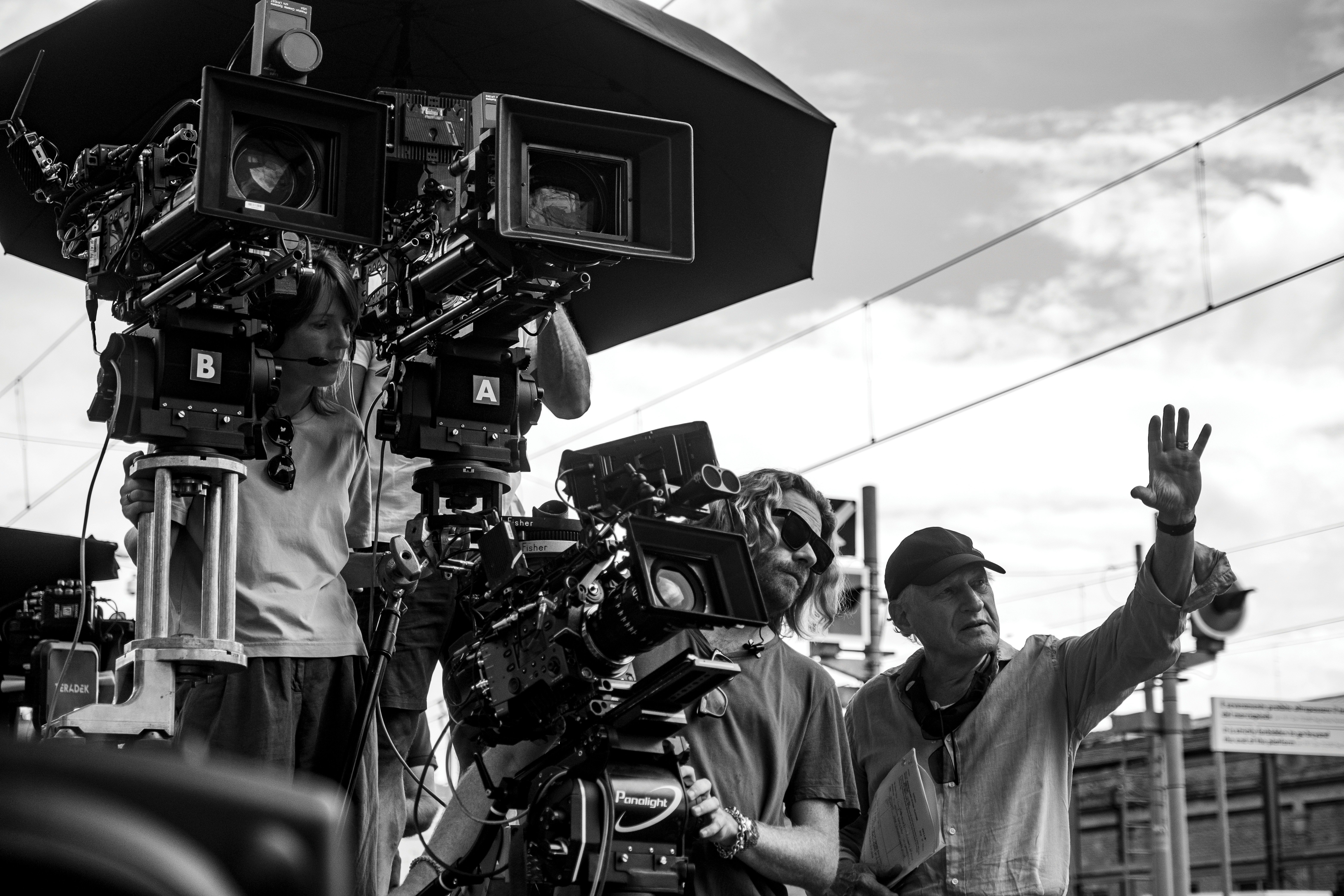
Capturing Track Action
Most of the car sequences were shot with six cameras. The unit mounted to the bolts was typically a Venice 2 (sometimes in Studio mode, sometimes in Rialto), a Red Komodo or a Red V-Raptor. “In cases where we needed to be really small, we used the Komodo or Raptor,” says Messerschmidt. Referencing the Venice 2’s “internal NDs, strong lens mount and high ISO capability,” the cinematographer notes that he “knew there would be situations where we would have five or six cameras working over an enormous racing set. So, the remote control of ND filtration was extremely attractive, as I could maintain a specific iris position without asking assistants to change filters.”
For the tracking vehicles, the production used a variety of tools, including Filmotechnic’s U-Crane. “We also used a fixed tracking vehicle, a Subaru WRX with a remote head from Allan Padelford attached to it,” the cinematographer adds. “That car was capable of performing at the same speed and level as our picture cars, so it could exist in the racing sequences and keep up with the cars at the real pace.
“The third vehicle we used extensively was the Biscuit Jr. Rig, also from Padelford. It’s a self-contained platform you can drive at extremely high speeds with actors in the car, but not actually driving the car.”
Ever-Present Danger
When Maserati beats Ferrari’s time-trial record, Enzo immediately sets out to challenge him. The attempt ends in a spectacular crash that kills the test driver. “The special-effects team did extensive testing in terms of launching the car, with the goal to be as accurate as possible,” Messerschmidt says.
At one point in the Mille Miglia race, a crash kills the driver and 11 bystanders, including children. “We only had one car we could crash for that stunt, so we had to be quite sure that it would land in the right place,” Messerschmidt says. “The planning started very early in the prep, and we did all sorts of exploratory methods for launching the car. Ultimately, we decided to build a self-driving vehicle that could be driven remotely with a cannon inside it that could be remotely actuated. So, the car could drive at full speed and then be launched with a push-button and land in the correct orientation. And it actually landed perfectly! The tumbling of the car was very lucky.”
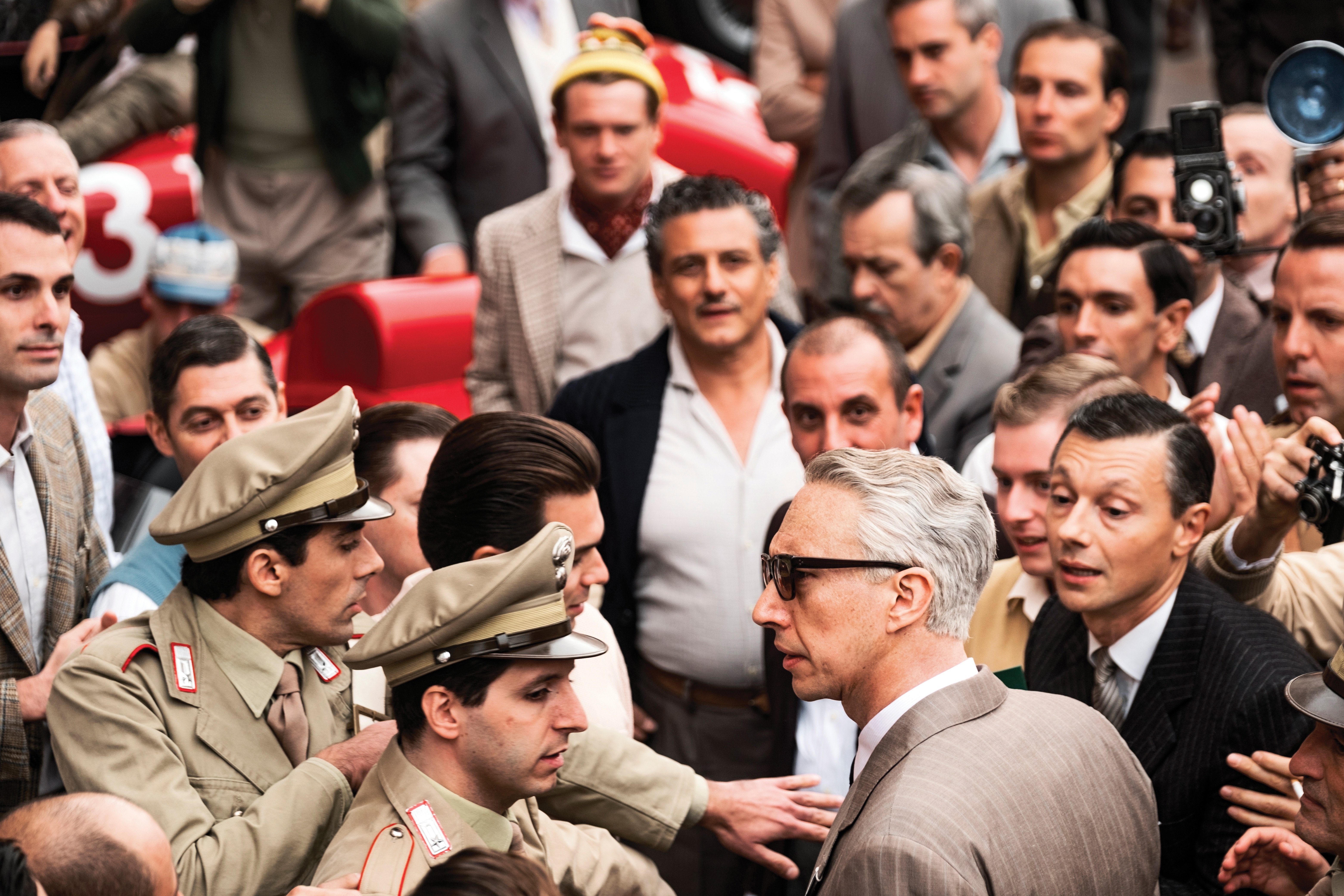
A Simple Plan
The Mille Miglia starts at night and called for Messerschmidt’s largest lighting setup. “I think we used four or five cameras, shooting simultaneously, for the starting-line sequence,” he says, “so we were shooting in multiple directions at any given moment.
“Exterior night is the hardest because it’s always the thing that looks the most contrived,” he continues. “I’m very averse to moonlight. Fortunately, we had excellent historical references for what the starting line looked like.
“After the cars leave the starting line, the script called for a fast-paced sequence on the road at night,” he continues. Michael wanted that scene to be very raw and frenetic as the cars jockey for starting position. They were traveling well over a mile and I had limited lighting options.”
The solution? Lighting with car headlights only.
“I was quite worried about that sequence, but it turned out to be one of my favorite sequences in the movie,” says the cinematographer. “It was also raining during the shoot that night, which added an additional element of texture that I really enjoy.”
You'll find our interview with Mann here.
Tech Specs
2.39:1
Cameras | Sony Venice 2; Red Komodo, V-Raptor
Lenses | Panavision Panaspeed, Primo zoom, H Series; P+S Technik Skater Scope; Fujifilm Fujinon Premier
Overhead View | Drone Work on Ferrari
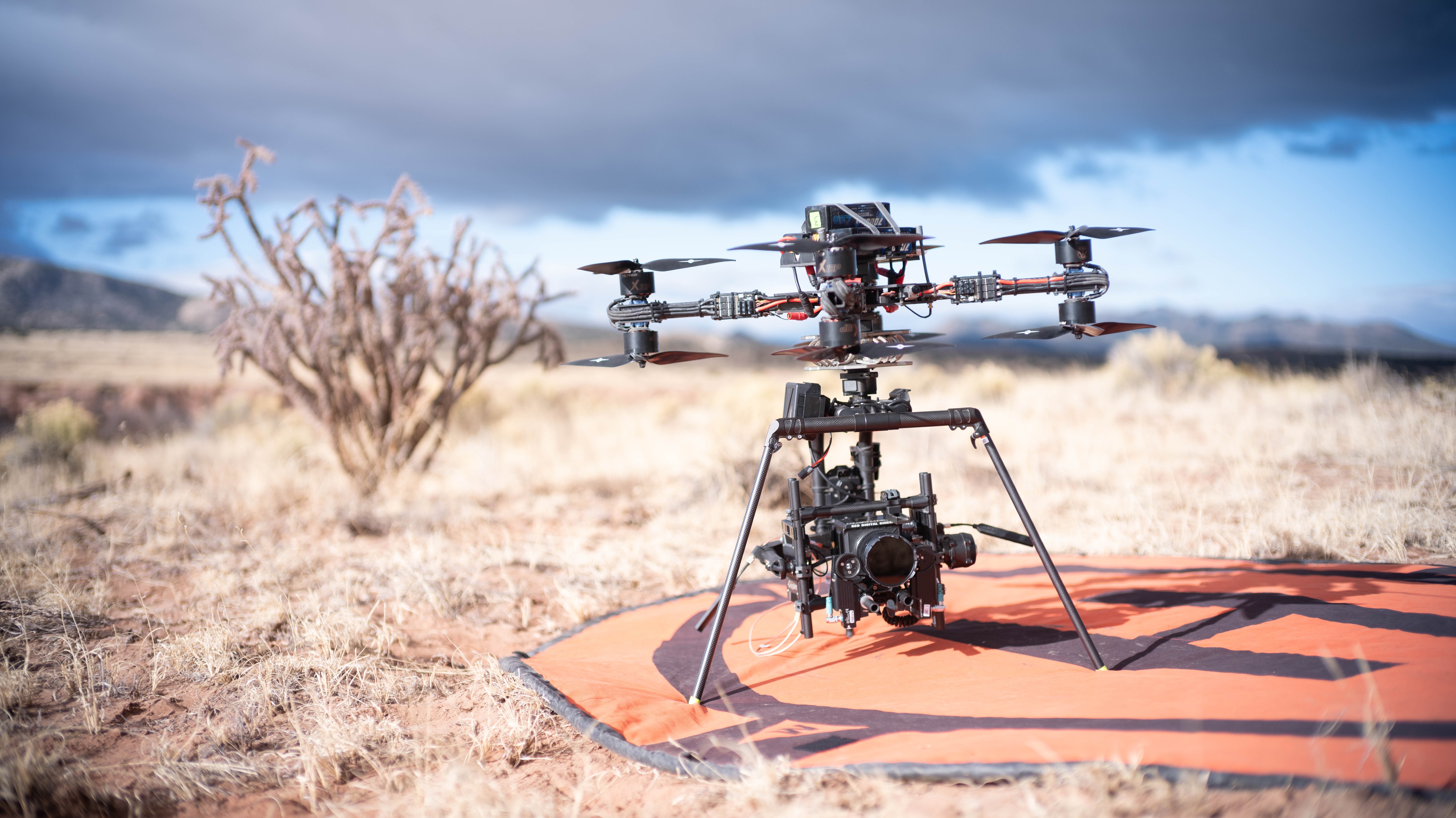
Drone-mounted cameras were used to capture aerial angles in Ferrari, though specialists at Lightcraft (AC Sept. ’23) were originally brought on to fly drones as an RF-relaying system. “The drone would fly high and then chase the cars — it would have antennas that I would actively point at the cars,” says Lightcraft CTO/drone pilot Davis DiLillo. “Then we would pipe everything back to the village, so the focus pullers, camera operators and Erik could see everything and adjust iris on the fly. We were able to shoot these long stretches of road without having to pick up and reset to get all this content.”
Production soon decided to put the drones to greater use, however. “I would say Ferrari was our first movie with high-speed tracking with the heavy FPV [first-person-view] drone,” says DiLillo. “It was a very good litmus test. They’re kind of a hybrid between an arm car and a helicopter. We were able to merge those gaps with this aircraft; we could track these cars at that high speed, have longer lenses on them, and keep up and compose these beautiful images of those cars in Italy.”
As the team pushed what was possible with FPV drone technology, they relied on Erik Messerschmidt, ASC’s expertise. DiLillo had worked with the cinematographer on the FX series Legion, flying FPV drones carrying LED lights in-frame to create otherworldly orbs. On Ferrari, “Erik very much ensured that lighting was proper and exposures were where he wanted them, and focused on determining camera angles. He was hands-off with us, kind of like a director. It was a very unique perspective.”
— Tara Jenkins






